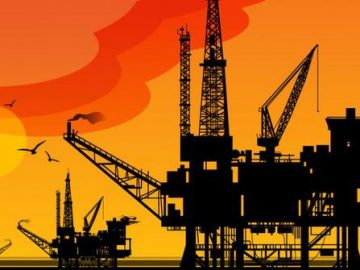DetikFinance, 28 Mei 2011
Jakarta – Meruginya elpiji 12 kg yang dijual oleh PT Pertamina (Persero) merupakan permasalahan yang klasik. Pasalnya, dengan harga jual yang dibawah harga keekonomian membuat Pertamina merugi cukup tinggi.
Namun, jika harganya dinaikan, maka akan banyak masyarakat yang beralih ke elpiji 3 kg yang disubsidi karena jauh lebih murah. Kasusnya mirip disparitas harga BBM bersubsidi (premium) dan Pertamax.
“LPG 12 kg itu permasalahan lama, masalah pengaturan,” kata Pri Agung, selaku Direktur Eksekutif ReforMiner Institute kepada detikFinance, Jakarta (Sabtu 28/5/2011).
Menurutnya, persoalan tabung elpiji 12 kg ini hampir sama analoginya seperti pertamax dan premium. Pemerintah tidak mau merubah disparitas harga yang tinggi.
“Pemerintah selalu bilang bahwa untuk tabung LPG 3 kg mekanisme distribusinya tertutup. Namun tetap saja terbuka, sehingga orang yang mampu tetap membeli tabung ukuran 3 kg tersebut,” katanya.
Seperti diketahui, pada Rapat Dengar Pendapat beberapa waktu lalu antara Pertamina dan Komisi VII DPR RI, dilaporkan bahwa Pertamina alami kerugian untuk tabung LPG 12 Kg senilai Rp 1 triliun pada triwulan pertama 2011.Dibandingkan dengan tahun lalu, selaa 2010 Pertamina alami kerugian hingga Rp 3,2 triliun. Sejauh ini, Pertamina masih menahan harga LPG 12 Kg tersebut. Pihak mereka ingin menaikkan harga demi mengurangi beban biaya produksi yang tidak diimbangi dengan harga jual akibat harga minyak tinggi yang mempengaruhi harga gas.
Di lain pihak, Kementerian BUMN yang membawahi Pertamina, belum memberi sinyal kepada perusahan migas tersebut demi merubah harga.
Indoensia Finance Today, May 19th 2011 JAKARTA (IFT) – The government will revise the profit-sharing scheme (split shceme) of the work contract for oil and gas contractors interested to invest in eastern Indonesia. According to Evita Herawti Legowo, Director General of Oil and Natural Gas at the Ministry of Energy and Mineral Resources, revising the split is the government s way of giving incentives to investors, so that oil and gas blocks in eastern Indonesia can grow.
The current profit-sharing scheme for oil is 85 percent for the government and 15 percent for the contractor. After the revision, the split will be 75:25, or even 70:30, depending on the condition of the blocks.
“As Indonesia’s eastern parts are mostly deepwater, we provide incentives in the form of a better split,” Evita said, Thursday. To determine the split, the government will cooperate with experts in geology, production, and infrastructure.
Pri Agung Rakhmanto, Director of ReforMiner Institute, believes that giving a 75:25 or 70:30 split, or even a 60: 40 ratio had long been implemented, yet it was never enough to attract investors to explore Indonesian eastern areas. There are several factors that are making investors less interested in investing in the region, among others are the unclear regulations, decision-making problems, red tape in the bureaucracy, and contractual uncertainties.
“All the uncertainties are making investors reluctant, even more so since an exploration is not necessarily profitable. If they are not resolved, the investment climate will stay bad,” Pri said.
Before giving incentives, Pri continued, the government should fix the problematic factors first. To make things easier for investors, the government also needs to take part in the exploration activity, such as conducting seismic and geological surveys to lessen the imposition of fees on investors.
Offering 20 Blocks
Evita said that the government will offer twenty blocks of oil and gas in Indonesia during the closing of the 35th Exhibition and Convention of the Indonesian Petroleum Association in Jakarta. Nine blocks are regular offers, while 11 will come from investor candidates as suggestions.The nine blocks from the regular offerings are: the Bulu Rembang, Offshore Timur Sea I, Offshore Timur Sea II, Halmahera I, Halmahera II, Halmahera III, West Aru I, West Aru II and Arafura Sea II blocks. The 11 direct-bargain blocks are located in Ranau, Northeast Madura, West Tanjung, Belayan, East Simenggaris, North Ganal, Babar Selaru, Obi, North Semai, West Berau and Semai IV.
Of the twenty blocks, 13 are located in eastern Indonesia, in Papua and East Timor borderline. The rest are in southern Sumatra, eastern Kalimantan and the northern parts of Java Island. (*)











